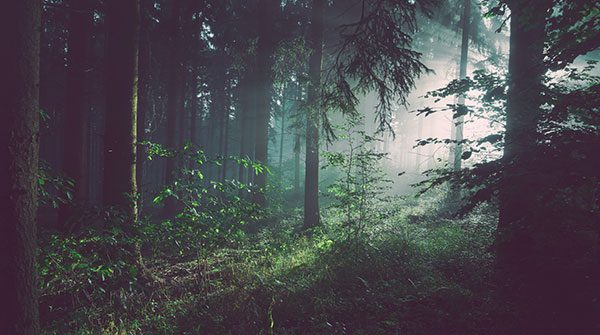Conservation of tree diversity is key to fighting climate change
Keeping tree diversity intact in Canada’s many forests over the long term can help increase carbon capture and mitigate climate change, according to a new University of Alberta study.
The study, published in Nature, is the first of its kind to show the sustained benefits of tree diversity on a large spatial scale, in terms of storing carbon and nitrogen in the soil. It reinforces the importance of biodiversity conservation in forests, says Xinli Chen, lead author on the paper and postdoctoral fellow in the Faculty of Agricultural, Life & Environmental Sciences.
 Xinli Chen |
 Scott Chang |
 Photo by Sebastian Unrau |
| Related Stories |
| Claims that trees “talk” to each other debunked
|
| What’s so great about a dead tree?
|
| How bugs and worms could help restore land after industrial use
|
“Conserving tree diversity is a valuable tool in mitigating climate change, particularly in enhancing carbon storage in soil,” he says.
While it’s already been established that increasing soil carbon and nitrogen storage can help ease the effects of climate change and sustain soil fertility, stocks of both elements have declined substantially on a global level due to factors like forest fires, deforestation and land use change, he notes.
Conserving and promoting tree diversity in forests can help increase the levels of soil carbon and nitrogen, he says.
The researchers analyzed Canada’s National Forest Inventory database and used statistical modelling to provide new evidence of a link between greater tree diversity and higher soil carbon and nitrogen accumulation in natural forest ecosystems over decadal time scales, meaning a time scale over 10 years or longer.
The work, done in collaboration with scientists from Canada, Japan and the United States, confirms collective findings from previous experiments that manipulated plant diversity, notes study co-author and soil scientist Scott Chang.
“This study tells us that what has been found in test plots also holds in natural forests.”
Specifically, the research showed that over the long term, evening out the numbers of tree species in natural forests would boost carbon and nitrogen in the organic soil layer by 30 and 43 per cent, respectively.
Hand in hand with that, increasing the variety of functional traits such as leaf nitrogen content and adult height of different tree species within a community could enhance carbon and nitrogen storage in the top mineral soil layer by 32 and 50 per cent.
The findings can “help guide growing efforts to use forests for carbon sequestration by protecting and enhancing the tree species diversity, which will at the same time benefit the productivity of forests today and in future,” Chang notes.
He suggests that government and industry, for example, can help steward biodiversity in Canadian forests by using a mix of tree species in reforestation efforts that include both hardwood and softwood species.
| By Bev Betkowski
This article was submitted by the University of Alberta’s Folio online magazine, a Troy Media Editorial Content Provider Partner.
The opinions expressed by our columnists and contributors are theirs alone and do not inherently or expressly reflect the views of our publication.
© Troy Media
Troy Media is an editorial content provider to media outlets and its own hosted community news outlets across Canada.

